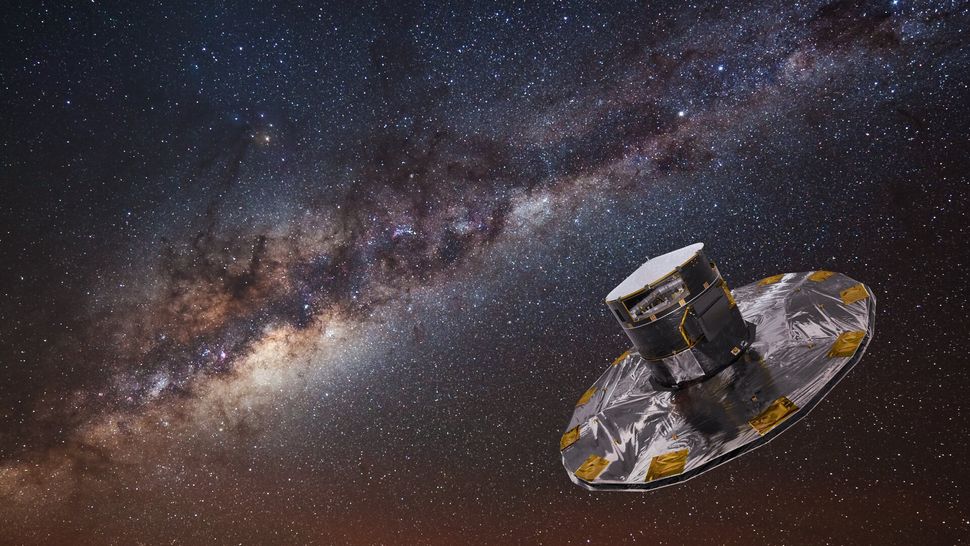Gaia spacecraft almost doomed by back-to-back meteor strike and solar storm -- but ESA says they've found a solution
By Stephanie Pappas published 2 days ago
The European Space Agency's Gaia spacecraft is back to routine operations studying the Milky Way after a meteor strike punctured its protective shield, allowing charged solar particles to stream through.

An illustration of the European Space Agency’s Gaia spacecraft mapping the Milky Way (Image credit: ESA/ATG medialab; background: ESO/S. Brunier)
In a rare double-whammy space assault, the European Space Agency's Gaia spacecraft was recently slammed by a micrometeoroid and struck by a solar storm, leaving it unable to function properly. But the satellite is now back to routine operations after the near-devastating impact, scientists say.
Gaia orbits at more than 932,000 miles (1.5 million kilometers) from Earth at what is known as the L2 Lagrange Point, where the combined gravitational forces of our planet and the sun create a stable orbit. The spacecraft's goal is to create a 3D map of the individual stars in the Milky Way.
But in April, a meteoroid smaller than a grain of sand hit Gaia and damaged the protective shield surrounding its instrumentation. In the months since, sunlight sneaking through this tiny crack has disrupted the spacecraft's sensors, according to ESA. In May, for unknown reasons, another piece of electronics failed — part of the system that enables Gaia to validate its detection of stars — resulting in thousands of false detections.
"Gaia typically sends over 25 gigabytes of data to Earth every day, but this amount would be much, much higher if the spacecraft's onboard software didn't eliminate false star detections first," Edmund Serpell, Gaia spacecraft operations engineer at the European Space Operations Centre, said in a statement. "Both recent incidents disrupted this process. As a result, the spacecraft began generating a huge number of false detections that overwhelmed our systems."
More:
https://www.livescience.com/space/space-exploration/gaia-spacecraft-almost-doomed-by-back-to-back-meteor-strike-and-solar-storm-but-esa-says-theyve-found-a-solution
